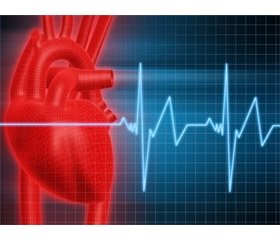Журнал «Медицина неотложных состояний» 1 (64) 2015
Вернуться к номеру
Experience in the use of extracorporal membrane oxygenation in the treatment of acute myocardial infarction complicated by cardiogenic shock
Авторы: DruzhynaO.M., Loskutov O.A. - Department of Anaesthesiology and Intensive Therapy P.L. Shupik National Medical Academy of Post-Graduate Education, Kiev, Ukraine; State Institution « Institute of the heart» of the Ministry of Health, Kiev, Ukraine; Shlapak І.P. - Department of Anaesthesiology and Intensive Therapy P.L. Shupik National Medical Academy of Post-Graduate Education, Kiev, Ukraine; Todurov B.M. - State Institution « Institute of the heart» of the Ministry of Health, Kiev, Ukraine
Рубрики: Медицина неотложных состояний
Разделы: Справочник специалиста
Версия для печати
Despite the advances made in the treatment of coronary heart disease, cardiogenic shock as a complication of acute myocardial infarction, continues to be an urgent problem of modern medicine, due to a significant percentage of mortality that can reach 60% - 80%. Currently, the most common method in the treatment of acute coronary syndrome complicated by cardiogenic shock, a percutaneous angioplasty. Recently, during percutaneous transluminal angioplasty in patients with acute myocardial infarction on a background of cardiogenic shock, is increasingly being used extracorporeal life support, as a method for the correction of low cardiac output.
Extracorporeal membrane oxygenation (ECMO) - a procedure prolonged extracorporeal circulation, performing temporary replacement of myocardial contractile function and / or respiratory function.
The aim of this work was the presentation of clinical cases of extracorporeal membrane oxygenation in patients with acute myocardial infarction, against which developed cardiogenic shock.
Clinical case.Рatient L. enrolled in the Heart Institute with a diagnosis of acute myocardial infarction, cardiogenic shock, pulmonary edema. Onset - 4 hours from the development of pain attack. The patient was taken to the emergency basis X-rays operating room for coronary angiography and percutaneous angioplasty possible.
According to the results of coronary artery angiography diagnosed 100% occlusion of the left anterior descending branch of the left coronary artery. At the time of the diagnostic study was pronounced cardiac arrest, started cardiopulmonary resuscitation (CPR). The patient was transferred to the ventilator. The patient was adjusted infusion agonists (dopamine 10 ug / kg / min., Epinephrine 0.15 ug / kg / min, norepinephrine 0.2 ug / kg / min), and vasodilators (nitroglycerin 1 ug / kg / min.). On the background of CPR Seldinger method, the femoral vein and the right femoral artery cannula was fitted with an inner diameter of 23 Fr and Fr 21 respectively.
Following heparinization (heparin / in a dose of 100 U / kg), the patient was connected to an apparatus for carrying ECMO System 1 (USA).
As an oxygenator system was used Maquet PLS (Germany). Blood pumping function performed centrifugal pump Rotaflow (Germany). The blood flow in the extracorporeal loop was maintained at 4.5 - 5.0 l / min.The flow of gas mixture through the oxygenator - 3 l / min., FiO2 feed gas mixture - 50%.
After stabilization of hemodynamic parameters, infusion was stopped adrenaline and noradrenaline, dopamine and the dose is reduced to 7 micrograms / kg / min.
Left femoral access, held mechanical recanalization of occluded coronary artery. Against the background of surgical procedures of the coronary artery arose repeated episodes of ventricular fibrillation that required a defibrillation the discharge energy of 200 J.
After predilation in the area of occlusion, at the mouth of the coronary artery was implanted coronary stent size 3,5 24mm. Postdilatation performed with a high pressure cylinder size 3,5 ? 18 mm in the proximal portion of the stent.
The control coronary angiography after stenting in the background ECMO blood flow in the postoperative coronary artery was estimated at 3 points on a scale of "TIMI". After completion of surgery, amid ongoing ECMO, the patient was transferred to the intensive care unit where the patient was performed the control echocardiogram, according to which, the zone violation of local contractility remained the same, recorded acinesia apex of the left ventricle, and left ventricular ejection fraction was 20% .
36 hours after the start of ECMO, according to echocardiographic monitoring, the patient developed a positive trend in the form of increased left ventricular ejection fraction to 47%.
It was decided to reduce the performance of ECMO, under the constant supervision of hemodynamics. In the next 6 hours on a background of stable hemodynamics was performed in vitro decrease in the rate of blood flow until it stops.
Conclusion. Endovascular revascularization by percutaneous angioplasty, amid connection extracorporeal membrane oxygenation is an effective treatment for acute myocardial infarction complicated by cardiogenic shock severe.

